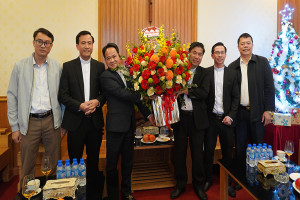
For the first time in Scotland’s Census a majority of people said they had no religion, according to a new report released by National Records of Scotland (NRS).

A total of 51.1% in Scotland’s Census 2022 responded ‘no religion’ – up from 36.7% in 2011. ‘No religion’ was the most common response in almost every council area in Scotland. In Na h-Eileanan Siar, ‘Church of Scotland’ remained the most common response and in Inverclyde ‘Roman Catholic’ was the most common response.
Across Scotland as a whole, 20.4% responded ‘Church of Scotland’, down from 32.4% in 2011. The next largest religious groups were ‘Roman Catholic’ (13.3%), ‘Other Christian’ (5.1%) and ‘Muslim’ (2.2%).
Data from the England and Wales census also showed an increase in the number of people reporting ‘no religion’ over recent decades but from a lower starting point.
The results are part of a wide range of statistics on ethnic group, national identity, language and religion from the 2022 census with key themes including migration and Scotland’s ageing population.
This is the first of seven reports on different topics from the census to be released over the next few months.
Director of Census Statistics Jon Wroth-Smith said:
“These statistics give a fascinating insight into religion, ethnicity, national identity and language use across Scotland and how they have changed over the years.
“It is exciting to publish the first of the topic releases and this, along with our other census data to come, will help local and central government, businesses and charities to plan services in the years ahead.”
The percentage of people in Scotland with a minority ethnic background increased from 8.2% in the previous census to 12.9% in 2022. This is a larger increase than over the previous decade (from 4.5% to 8.2%).
The percentage of people who said Scottish was their only national identity increased since the previous census (from 62.4% to 65.5%). The percentage who said their only national identity was British also increased (8.4% to 13.9%). The percentage who said they felt both Scottish and British decreased (18.3% to 8.2%).
The census also found that 2.5% of people aged 3 and over had some skills in Gaelic in 2022. This is an increase of 43,100 people since 2011 when 1.7% had some skills in Gaelic. In Na h-Eileanan Siar the majority of people had some Gaelic skills (57.2%). This was far higher than the next highest council areas, Highland (8.1%) and Argyll and Bute (6.2%).
The percentage of people with some skills in Scots also increased, to 46.2% in 2022 from 37.7% in 2011.
A total of 2.2% of people aged 3 and over can use British Sign Language (BSL). This was a new question for the 2022 census.
Background:
The full report is available on the Scotland’s Census website.
More detail about the schedule for future reports can be found here. The reports will provide unique insights into the characteristics of Scotland's people, including information on the labour market, education and housing. For the first time, it will also include data on armed forces veterans, sexual orientation and trans status or history.
For more than 200 years Scotland has relied on the valuable data the census provides and it remains the best way to gather vital information about Scotland’s people that data users in the public, private and third sectors need.
Scotland’s Census results are designated as Accredited Official Statistics and form an integral part of the statistical system in the UK. The Office for Statistics Regulation (OSR), the independent regulatory arm of the UK Statistics Authority, awards Accredited Official Statistics designation based on the quality, good practice and comprehensiveness of official statistics.
Source: www.nrscotland.gov.uk/




